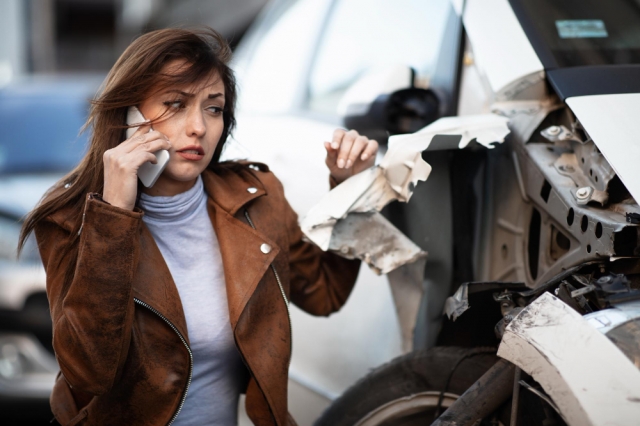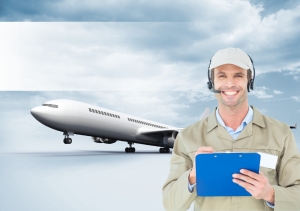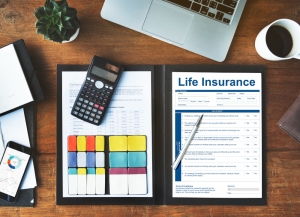The growing demand for rideshare services like Lyft, especially during peak hours, has led to a higher likelihood of accidents. Jersey City's bustling streets and high traffic volume present unique challenges for Lyft drivers and passengers, making it crucial to understand the common types of accidents that occur during these busy periods.
By recognizing these common Lyft accidents, drivers and passengers can take proactive steps to enhance their safety and vigilance. Awareness and preparedness are key to navigating the distinct challenges posed by peak-hour traffic in Jersey City.
Rear-End Collisions
Rear-end collisions are among the most common types of accidents during peak hours. The stop-and-go nature of heavy traffic increases the likelihood of these incidents. Lyft drivers frequently stopping to pick up or drop off passengers can contribute to sudden braking, catching other drivers off guard.
To prevent rear-end collisions, Lyft drivers should maintain a safe following distance and avoid sudden stops when possible. Passengers can help by ensuring they are ready to enter or exit the vehicle promptly, reducing the time the driver needs to stop.
Side-Impact Accidents
T-bone collisions, also known as side-impact accidents, are a common type of car accident that frequently take place at intersections. These accidents occur when one vehicle is struck on the side by the front of another vehicle, often due to factors such as running red lights or failing to yield the right of way. Typically, these incidents are more likely to happen during peak traffic hours when drivers may feel pressured to reach their destinations quickly, potentially leading to risky driving behaviors and increasing the likelihood of side-impact collisions.
For Lyft drivers, it's crucial to exercise caution when approaching and navigating intersections. This includes always obeying traffic signals and being vigilant of other drivers who may not adhere to the rules of the road. Practicing defensive driving techniques, such as anticipating potential hazards and mentally preparing to react if necessary, can significantly help reduce the risk of being involved in side-impact accidents.
Lane Change Collisions
When traffic is congested during peak hours, collisions caused by lane changes are common occurrences. Many drivers frequently attempt to switch lanes in order to navigate through traffic, often without properly checking their blind spots or signaling their intentions.
It's important for Lyft drivers to prioritize safety by always using their turn signals and thoroughly checking their mirrors and blind spots before changing lanes. Additionally, passengers play a crucial role in safety by avoiding distracting the driver during lane changes, thereby allowing the driver to maintain full focus on the road ahead.
Pedestrian Accidents
Peak hours in Jersey City see a significant increase in pedestrian traffic, especially near popular destinations and public transportation hubs. Pedestrian accidents occur when drivers fail to yield the right of way or when pedestrians unexpectedly cross the street.
Lyft drivers must remain vigilant for pedestrians, particularly in high-traffic areas. Slowing down and being prepared to stop can prevent accidents. Pedestrians should also use crosswalks and follow traffic signals to enhance their safety.
Parking Lot Accidents
Parking lots, especially those near shopping centers, restaurants, and event venues, can be hotspots for peak-hour accidents. Limited space and high vehicle and pedestrian traffic can lead to fender benders and minor collisions.
Drivers should navigate parking lots slowly and be alert for pedestrians and other vehicles. Passengers can assist by guiding the driver into parking spaces and ensuring it is safe to open doors before exiting the vehicle.
Distracted Driving Accidents
Distracted driving poses a significant risk on the roads, especially during peak traffic periods when drivers may feel the urge to multitask. Lyft drivers, who often rely on navigation systems, communicate with passengers, and may need to handle their phones, are particularly vulnerable to distractions.
To mitigate the risks associated with distracted driving, it is crucial for Lyft drivers to leverage hands-free devices and voice-activated controls to interact with their devices or communicate with passengers. At the same time, passengers can contribute to reducing distractions by minimizing unnecessary conversations and allowing the driver to concentrate on navigating through traffic, particularly during busy periods.
Fatigue-Related Accidents
During peak hours, which typically happen during the early morning rush hour and late evening commute, drivers are more likely to experience fatigue due to factors such as disrupted sleep patterns and circadian rhythms. This fatigue can lead to slower reaction times, impaired judgment, and diminished concentration, significantly increasing the risk of accidents during these times.
It's essential for Lyft drivers to prioritize adequate rest and sleep before beginning their shifts, and to take regular breaks to refresh themselves as needed. Recognizing the signs of fatigue, such as yawning, heavy eyelids, or difficulty focusing, and taking proactive measures like pulling over to rest can play a crucial role in reducing the likelihood of accidents caused by drowsy driving, ultimately ensuring the safety of both the drivers and their passengers.
Handling Insurance and Legal Issues
When accidents occur with Lyft vehicles, handling insurance and legal matters can be quite complex. Figuring out who is liable and managing the claims process necessitates a deep comprehension of rideshare insurance policies and the specific laws in the area where the accident occurred.
For those involved in Lyft accidents, consulting a Jersey City Lyft accident lawyer at Brady Reilly & Cardoso, LLC can provide essential guidance. Experienced attorneys can help victims understand their rights, gather necessary evidence, and negotiate with insurance companies to secure fair compensation.
The Importance of Reporting and Documentation
Accurate reporting and documentation are essential following a Lyft accident. Both drivers and passengers should report the accident to Lyft and local authorities, making sure all details are recorded. Taking photographs of the accident scene, vehicle damage, and any injuries can provide valuable evidence for insurance claims and legal proceedings.
To streamline the claims process, comprehensive records of medical treatments, repair estimates, and communications with insurance companies must be maintained. Legal professionals can help organize and present this information effectively.
Addressing Safety Through Training and Technology
Lyft and other rideshare companies can significantly reduce accidents during peak hours by investing in driver training and leveraging technology. Comprehensive training programs that emphasize defensive driving techniques, hazard recognition, and customer service can prepare drivers to handle the challenges of peak-hour traffic more effectively.
Additionally, implementing advanced safety technologies, such as collision avoidance systems and driver monitoring tools, can help prevent accidents. These technologies can provide real-time feedback to drivers, alerting them to potential hazards and encouraging safer driving practices. By combining thorough training with cutting-edge technology, rideshare companies can enhance the overall safety of their services and reduce the frequency of accidents during busy periods.






